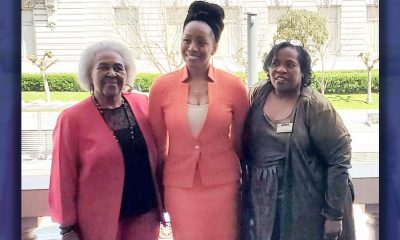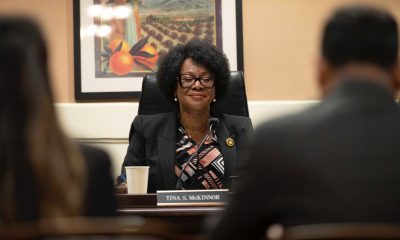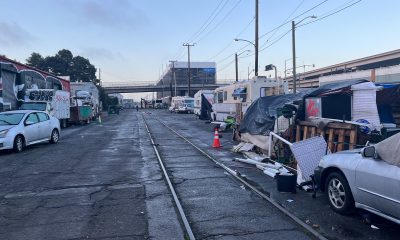Advice
New Bivalent Boosters Adds Protection from Omicron Variant Ahead of Predicted Surge
“Many in the community have expressed concerns that the vaccine was created too fast to be safe and reliable,” Brooks said, “The mRNA platform … that’s been around for 11 years or so; it was developed when we had SARS CoV-1 so a lot of people forget because it didn’t go pandemic and then MERS, which was Middle Eastern Respiratory Syndrome, which similar, so we use that mRNA platform.”
![Zccording to Dr. Oliver Brooks, Chief Medical Officer, Watts Healthcare, “unvaccinated people [account for] 2.4 times more cases, 4.6 times more hospitalizations, 8 times more deaths.”](https://www.postnewsgroup.com/wp-content/uploads/2022/09/bivalent-boosters-featured-web.jpg)
Maxim Elramsisy | California Black Media
California has started administering updated COVID-19 booster shots after the Centers for Disease Control and Prevention (CDC) approved the use of new versions of boosters of the vaccine for people aged 12 and older.
The Western State Scientific Safety Review Workgroup independently reviewed the boosters and recommended that they be given to people who have already received primary vaccinations, regardless of the booster status.
The updated boosters will be “bivalent,” offering protection against the original coronavirus strains, as well as improved immunity to the currently dominant BA.4 and BA.5 strains, also known as the Omicron variants.
The Pfizer/BioNTech bivalent booster is available for people 12 years and older, while the Moderna bivalent booster is approved for those 18 years and older. The bivalent boosters have not been authorized for children under the age of 12.
“We are getting closer to an analogy with the flu vaccines,” Dr. Gil Chavez, Senior Medical Officer, Office of the State Epidemiologist, California Department of Public Health, said during a recent ethnic media sponsored COVID-19 panel discussion with other medical doctors and public health officials: Dr. Maggie Park, County Public Health Officer, San Joaquin County Public Health Services; Dr. Oliver Brooks, Chief Medical Officer, Watts Healthcare; and Dr. Eva Smith, Medical Director, K’ima:w Medical Center.
According to Chavez, “Whereas you know every year we have to get an influenza vaccine to ensure that we get the updated vaccine … with COVID-19, we are moving in the same direction where we believe that it will be important to have at least an annual booster.”
“The goal, and our hope, is to continue on a path of a low number of cases and prevent a surge in COVID cases this winter. That is why public health officials urge individuals to get the updated booster,” Chavez said.
Officials reiterate that, though boosters will prevent disease for some people, they are critically important to prevent people who contract COVID from getting seriously ill, to the point where they may be hospitalized and potentially die.
The vaccines are also an important tool for preventing “long COVID,” where symptoms such as headaches, brain fog, and fatigue can be prolonged for more than six months.
In July, a surge in infections driven by the highly transmissible BA.5 subvariant almost pushed Los Angeles County, for example, to reinstitute a universal indoor mask mandate.
“BA.5 has been the predominant circulating variant since July and is still and now accounting for about 87% of all newly diagnosed cases of COVID, with BA.4 pretty much accounting for the rest,” said Park. “I want to say that the rollout of this new booster is actually quite timely, as many models are predicting that we’re facing another COVID-19 surge this fall or winter and we need to be ready.”
While scientists believe many people infected in the most recent COVID surge will have natural immunity for some time, this type of protection begins to wane after around 90 days. So, even people who have had COVID in the past should consider getting a booster around 3 months after being infected.
In California, vaccine hesitancy persists. 72% of all people have received primary vaccinations, but only 58.8% of people eligible for boosters have received a booster.
This is worrisome because, according to Dr. Brooks, “unvaccinated people [account for] 2.4 times more cases, 4.6 times more hospitalizations, 8 times more deaths.”
Brooks shared a concept to combat vaccine hesitancy by responding to the common points of resistance in his patients, called the three C’s – complacency, confidence, and convenience.
Complacency afflicts those who think that COVID is over — or are fatigued and overwhelmed by the fact that, for the past couple of years, the virus has dominated many facets of life. Yet, it is still evolving to become more highly transmissible and more evasive of immunity from infection or vaccination. According to statistics from the Los Angeles County of Public Health, the Omicron variant killed people in all age groups at a higher rate than motor vehicle crashes.
People are concerned about the safety of the vaccines because of “misinformation that’s being perpetuated in our communities,” according to Park. “But with all the millions of doses that have been given in the United States and around the world today, we have so much information about them, and we do know that they’re safe,” she said.
“Many in the community have expressed concerns that the vaccine was created too fast to be safe and reliable,” Brooks said, “The mRNA platform … that’s been around for 11 years or so; it was developed when we had SARS CoV-1 so a lot of people forget because it didn’t go pandemic and then MERS, which was Middle Eastern Respiratory Syndrome, which similar, so we use that mRNA platform.”
Many people are also contending that the shots don’t work, as they are still getting infected. Park said, “People say[ing] ‘My friend is fully vaccinated and boosted but she’s still got COVID,’ and to that, I say yes, but is she still alive? And yes, of course, she is. We never promised that the vaccinations would mean you wouldn’t get COVID … what we know is that your chance of getting COVID decreases with vaccines, but the decrease is even greater when it comes to your chance of being hospitalized or dying.”
As for convenience, vaccines are now available at locations across the state with relative ease of access and at no charge. There are no anticipated supply constraints, so there are no groups that are being given priority. Those seeking vaccines or boosters can book an appointment at Myturn.ca.gov.
Activism
Leading with Action, Love and Data Points: Six Questions for the California Black Women’s Collective
“Black Women in California have always had to be active participants in the labor market, but this report showcases the need for fair and just wages even for those of us with higher educational attainment,” said Kellie Todd-Griffin, President and Chief Executive Officer of the California Black Women’s Collective.
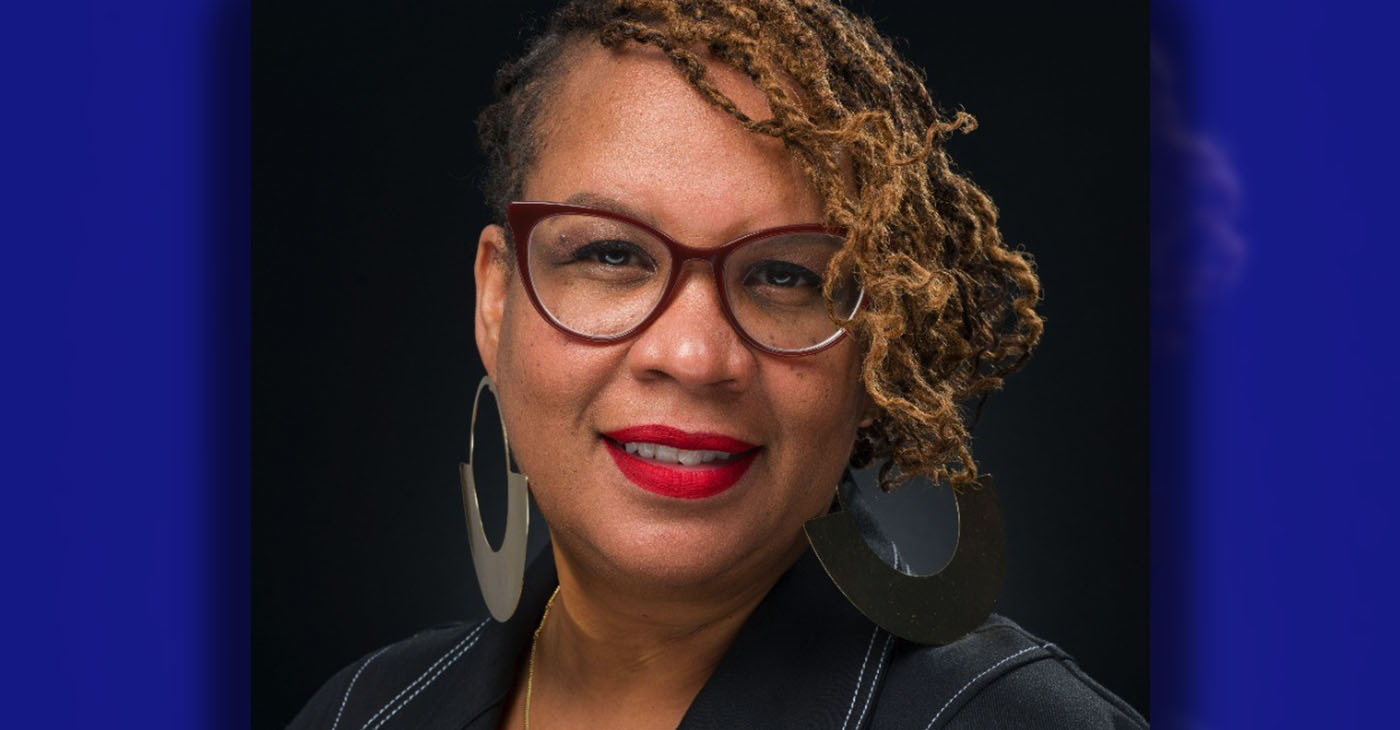
By Edward Henderson | California Black Media
The California Black Women’s Collective (CABWC) is a sisterhood of women from different professional backgrounds aiming to uplift and address the issues impacting Black women and girls in the state. They approach problem-solving with a range of expertise — from politics, business, and community advocacy to the arts, entertainment, social justice activism, and more.
Earlier this month, the organization released a wage report focused on Black women’s earnings in California titled “Pay Me What I am Worth.”
“Black Women in California have always had to be active participants in the labor market, but this report showcases the need for fair and just wages even for those of us with higher educational attainment,” said Kellie Todd-Griffin, President and Chief Executive Officer of the California Black Women’s Collective.
“Black Women in California wages are below the state mean wage and make less than most of their female counterparts in every category,” continued Todd-Griffin. “We must take action now.”
CABWC’s Black Girl Joy Festival is an event designed to uplift Black Women and Girls in a safe space while learning and having fun. The festival includes free workshops that prepare women for college, dancing, self-defense training, health screenings, yoga, arts & crafts, and food vendors.
The Collective’s Empowerment Institute, launched in collaboration with the Los Angeles-based research firm EVITARUS, produces the annual California Black Women’s Quality of Life Survey.
California Black Media spoke with Todd-Griffin about the organization’s impact, challenges it faces and some of its near-term plans.
What does your organization do to improve the lives of Black people in California?
The California Black Women’s Collective Empowerment Institute’s uplifts the issues and voices of Black Women and Girls in California through our programming. That includes the Black Women’s Worker Initiative that helps Black Women prepare for public section and non-traditional careers. Other initiatives are the CA Black Women’s Leadership Development Certificate program at CSU Dominguez Hills; Black Girl Joy Festival for middle and high school students; Conversations for Black Women, etc. Our targeted research also uncovers solutions to the toughest challenges Black women and girls face.
What was your greatest success over the course of the last year?
We released the first-ever California Black Women’s Quality of Life Survey. This study collected insights from 1,258 Black women voters across California to understand their economic state, most pressing concerns, their attitudes toward policymakers, and their experiences and issues in California.
In your view, what is the biggest challenge Black Californians face?
Black Californians, especially Black Women, continue to be left out of the conversation when it comes to building meaningful change to improve the lives of those who struggle the most.
What was your organization’s biggest challenge?
Our biggest challenge over the last year was transitioning from a volunteer driven entity, the California Black Women’s Collective, to creating a non-profit organization, the California Black Women’s Collective Empowerment Institute.
Does your organization support or plan to get involved in the push for reparations in California?
Absolutely!
How can more Californians of all backgrounds get involved in the work you’re doing?
We are on all the social media channels. They can also visit our website, www.CABlackWomensCollective.org.
Activism
The Silent Struggle of Pregnancy Loss
It is a tragedy that Black women’s odds of pregnancy loss are much higher than the general population. It’s even more tragic that there is a Black woman reading this article who has experienced pregnancy loss and has suffered in silence. There are an array of feelings associated with pregnancy loss, and women often feel alone and isolated in these feelings believing that no one understands what they are going through.
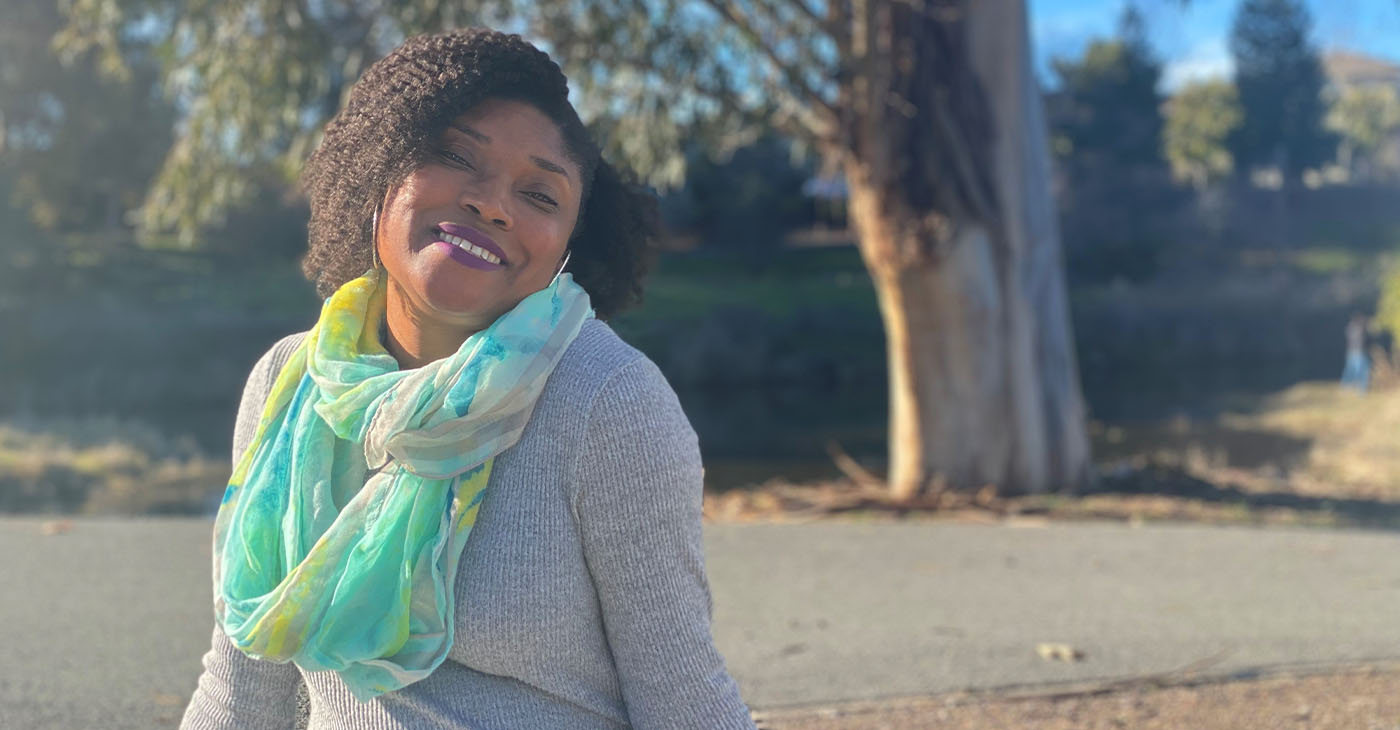
By Narissa Harris, LMFT
The topic and contents of this article may be difficult for some readers. Yet, it is of paramount importance to shed light on the silent struggle of pregnancy loss experienced by countless women.
During the holiday season, we often assume everyone is in a festive, happy mood. However, this time of year is filled with mixed emotions and can be especially difficult for Black women, who are 2-3 times more likely to experience a pregnancy loss compared to other women. Pregnancy loss (the death of an unborn baby/fetus during pregnancy) is experienced by 10-15% of women and doubles to 20-30% for Black women. Additionally, Black women are 3 times more likely to have a stillbirth in comparison to other women.
It is a tragedy that Black women’s odds of pregnancy loss are much higher than the general population. It’s even more tragic that there is a Black woman reading this article who has experienced pregnancy loss and has suffered in silence. There are an array of feelings associated with pregnancy loss, and women often feel alone and isolated in these feelings, believing that no one understands what they are going through.
Whether you are aware that someone has experienced pregnancy loss, or you have experienced pregnancy loss yourself, we must be sensitive and supportive to the women in our lives during this time of year. I encourage the following:
#1 – Don’t ask a woman about her uterus!
Yes, I know this is blunt and harsh, but it is important to be mindful of the trauma that may be triggered when asking a woman when she plans to have a baby. I will never forget being at a holiday party when a family member asked me when I was planning on having kids, unaware that I experienced my 3rd pregnancy loss just 6 weeks prior. It was triggering, upsetting, and annoying. While my husband and I were eventually blessed with 2 healthy children, I share my experience to reiterate the immediate and long-term harm caused by these types of invasive inquiries.
#2 – Connect with a supportive community!
If you are someone who has experienced a pregnancy loss or know a woman who has, it is vital to connect with a safe and supportive community even when everything is telling you (or that woman) to isolate. While no one in the chapter knew that I was dealing with pregnancy loss at the time, my connection with the Bay Area Chapter of the Association of Black Psychologists (Bay-ABPsi) served as a healing and uplifting space for my grief/loss. I learned from Baba Dr. Wade Nobles, who describes babies as divine and the closest beings to God. I want you to remember that connecting with our spiritual community and ancestors can offer healing and support.
#3 – Never lose hope!
To the women who have experienced pregnancy loss, it’s easy to believe that a successful pregnancy will not happen but keep the hope. Take the time you need to grieve and release the baby (or babies), allowing your womb to heal. View the lost pregnancy in terms of a spirit with a Divine purpose, even if it was short-lived, with you being the vessel for that Divine purpose. Believe and prepare for your baby, who will survive and succeed beyond the womb to fulfill their Divine purpose!
Bay ABPsi is a healing resource committed to providing the Post Newspaper readership with monthly discussions about critical issues in Black Mental Health. Readers are welcome to contact us at bayareaabpsi@gmail.com and join us at our monthly chapter meetings every 3rd Saturday via Zoom.
Advice
BOOK REVIEW: “The Day After Yesterday: Resilience in the Face of Dementia”
Well into his twenties, Joe Wallace was asked to sit with his “Granddaddy Joe” while Wallace’s mother and grandmother ran errands. His grandfather was once a vibrant man, and he’d been Wallace’s “hero,” but Alzheimer’s had put a curtain of sorts between them, and Wallace was “so frightened to be left alone with him.” It didn’t take long for him to realize that day that his grandfather was full of stories, and it was “magical.” He applied the same kind of patience when his grandmother began to experience dementia, too, and this spurred Wallace to tell a story of his own with his camera.
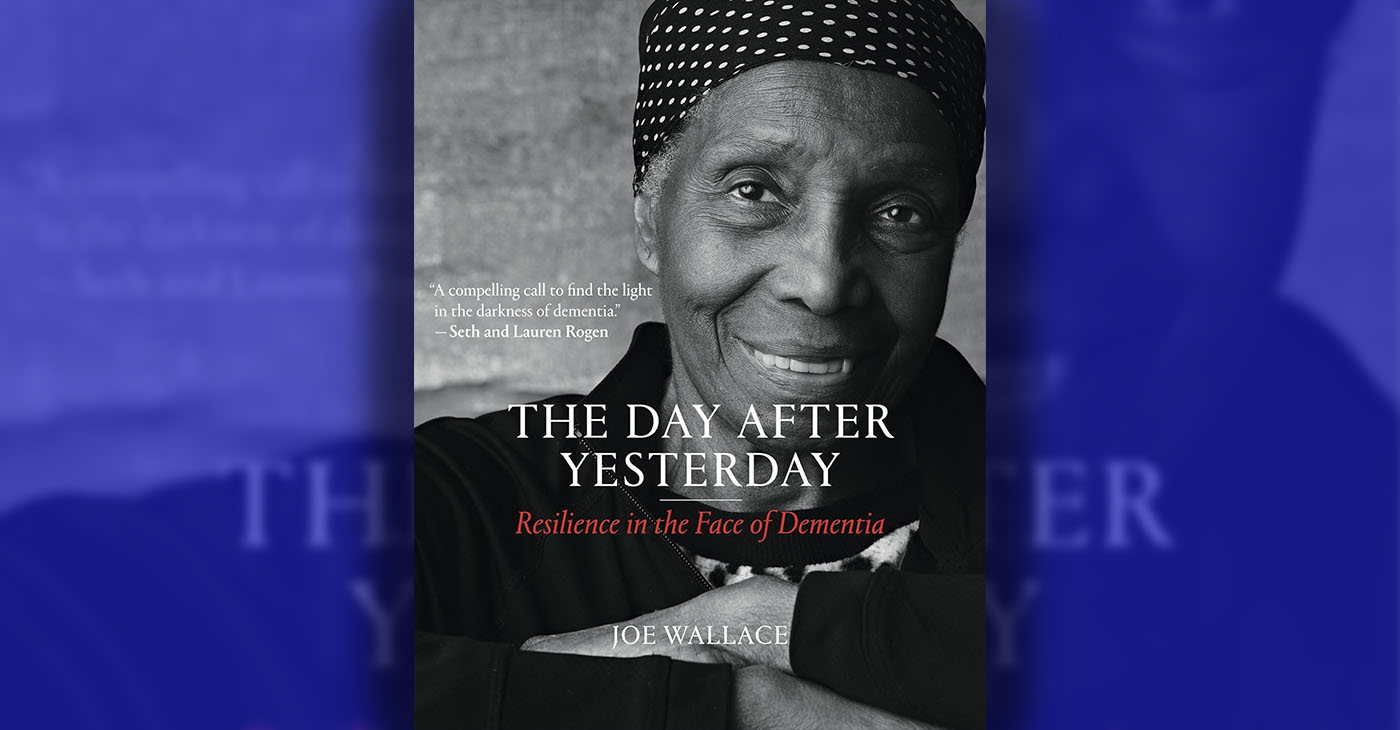
By Terri Schlichenmeyer
Sometimes, Mom talks a lot of nonsense.
She talks in random syllables, half-jokes, thoughts that come out of her mouth backwards or mixed up. You try, she laughs, you laugh, pretending that you understand but you don’t. Mom has dementia and there’s nothing that’ll fix it, but you can read “The Day After Yesterday” by Joe Wallace and change the conversation.
Talk about your awkward encounters.
Well into his twenties, Joe Wallace was asked to sit with his “Granddaddy Joe” while Wallace’s mother and grandmother ran errands. His grandfather was once a vibrant man, and he’d been Wallace’s “hero,” but Alzheimer’s had put a curtain of sorts between them, and Wallace was “so frightened to be left alone with him.”
It didn’t take long for him to realize that day that his grandfather was full of stories, and it was “magical.” He applied the same kind of patience when his grandmother began to experience dementia, too, and this spurred Wallace to tell a story of his own with his camera.
The portraits he captured eventually became an exhibit, and this book.
“In the United States,” Wallace says, “one in three seniors suffers with Alzheimer’s or another dementia at the time of their death.” Nearly $700 billion dollars annually is spent caring for people with dementia. Alzheimer’s, as one of Wallace’s subjects points out, affects Black seniors more often than it does whites. For that matter, people with dementia need not be seniors: early-onset Alzheimer’s can affect someone in their early 20s.
Listen, Wallace’s subjects almost always say, and don’t hide a diagnosis of dementia. There’s no shame in it. Reach out to others who’ve received the diagnosis. Ask for help. Watch for suicidal thoughts and depression. Ask for stories, before they’re lost, and be honest about what’s going on. You can’t change the diagnosis, but you can change your attitude toward it.
It’s called The Long Goodbye for a reason – and yet, your loved one with dementia is still on this side of the sod and you know there’s still some there there. In “The Day After Yesterday,” you’ll get a new point-of-view, for both of you.
In his introduction interview, author Joe Wallace explains how he came to understand that “we could all do so much better” for those with cognitive disabilities, including Alzheimer’s, and why eliminating fear and awkwardness is essential. Readers will be quite taken by the then-and-now pictures and by the conversations Wallace captured.
But beware: this isn’t a book on caregiving or advice-giving. It’s a delightful, heartbreaking, tearful, surprising collection of profiles of everyday people in their own words, people who go with the flow and deal with tomorrow when it comes. Yes, you’ll find advice here, but it pales in comparison to the presence that Wallace’s subjects and their families exhibit.
This powerful book is great for someone with a new dementia diagnosis; it proves that life is not over yet. It’s likewise great for a caregiver, gently ushering them toward grace.
Get “The Day After Yesterday. It’s time for a talk.
“The Day After Yesterday: Resilience in the Face of Dementia” by Joe Wallace
c.2023, The MIT Press. $34.95; 157 pages.
-

 Activism4 weeks ago
Activism4 weeks agoOakland Post: Week of March 27 – April 2, 2024
-

 #NNPA BlackPress4 weeks ago
#NNPA BlackPress4 weeks agoCOMMENTARY: D.C. Crime Bill Fails to Address Root Causes of Violence and Incarceration
-

 #NNPA BlackPress4 weeks ago
#NNPA BlackPress4 weeks agoMayor, City Council President React to May 31 Closing of Birmingham-Southern College
-

 #NNPA BlackPress4 weeks ago
#NNPA BlackPress4 weeks agoBeloved Actor and Activist Louis Cameron Gossett Jr. Dies at 87
-

 Community1 week ago
Community1 week agoFinancial Assistance Bill for Descendants of Enslaved Persons to Help Them Purchase, Own, or Maintain a Home
-

 Activism3 weeks ago
Activism3 weeks agoOakland Post: Week of April 3 – 6, 2024
-

 Business1 week ago
Business1 week agoV.P. Kamala Harris: Americans With Criminal Records Will Soon Be Eligible for SBA Loans
-

 Activism2 weeks ago
Activism2 weeks agoOakland Post: Week of April 10 – 16, 2024

